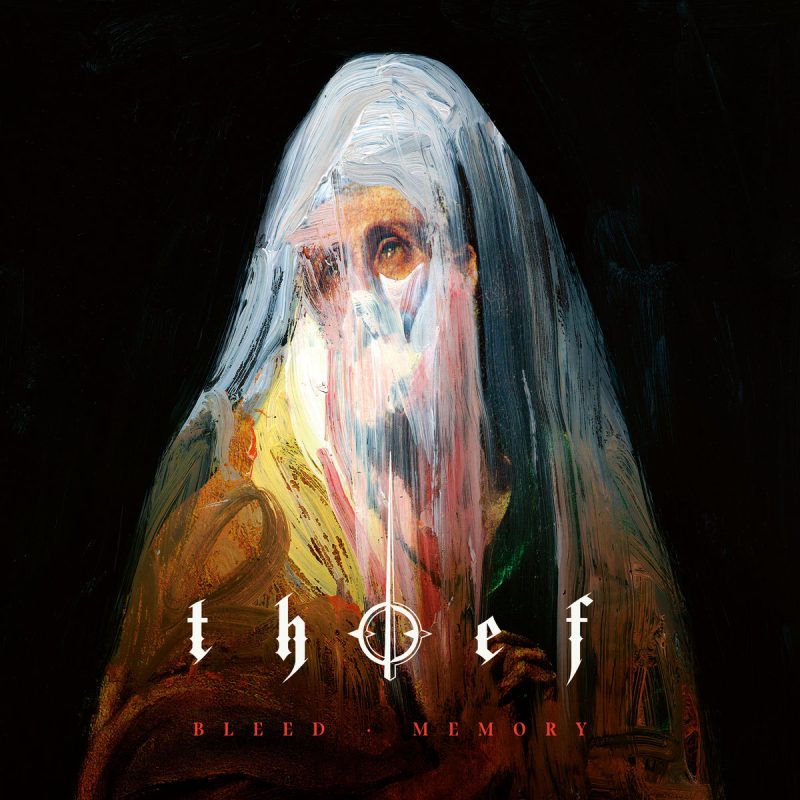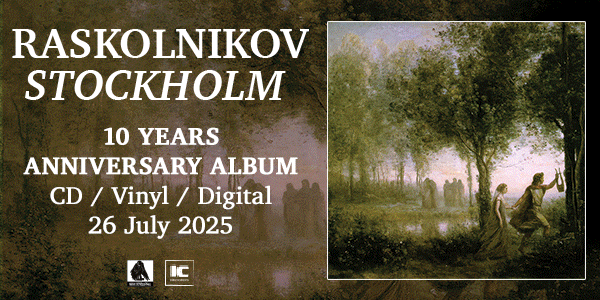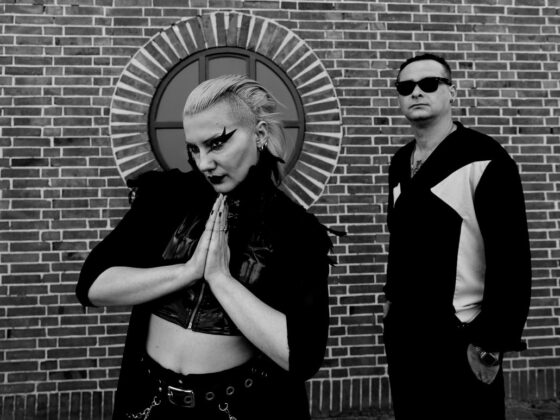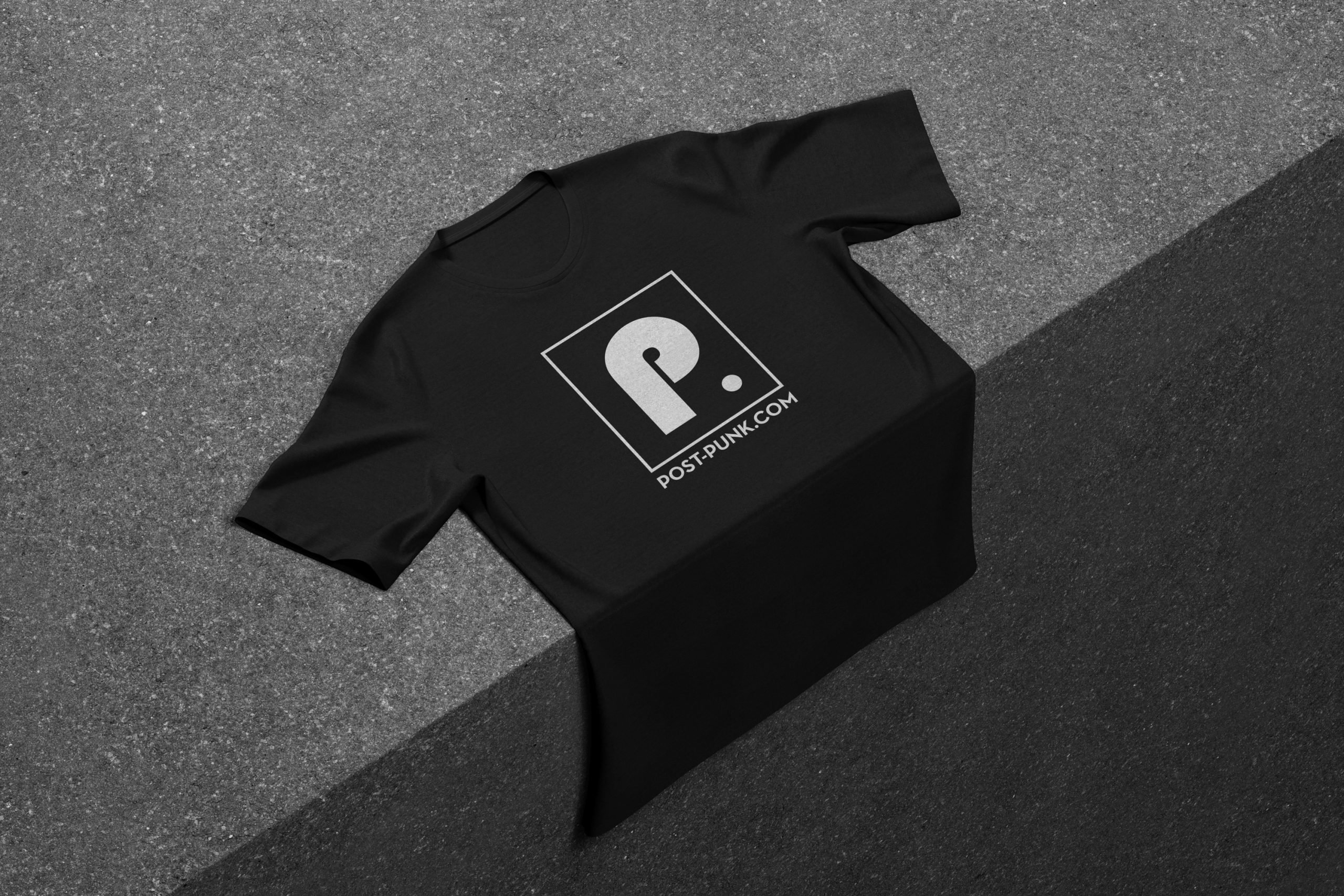Farewell pale repents
Farewell lone torment
I have poisoned the pool in the lion’s den
I have torn from the womb the born again
Dementia is a relentless thief. It steals away its victims’ memories, identity, and the people they love, leaving behind a hollow shell where dignity once stood. On their fourth album, Bleed, Memory, Los Angeles-based electronic experimentalist THIEF delve into the dark depths of memory’s unraveling. The project’s mastermind, Dylan Neal, found inspiration in a painful place—watching his father, newly diagnosed with dementia, slip from moments of mere forgetfulness into a maze of false memories, delusions, and eerie visions. This album is Neal’s haunting exploration of the fragile mind’s slow surrender to a merciless intruder.
Bleed, Memory is as personal as it gets. The ordeal pushed Neal to question his own memories, exploring how they mold his identity and reality. Memories aren’t just tales we spin—they’re ghosts haunting our minds. Neal likens them to phantoms, intangible but terrifying to those who believe. These spectral memories seep into the music, echoing with the weight of the unseen. The cover art reflects this eerie concept—a reimagining of El Greco’s The Tears of Saint Peter by Joseba Eskubi. The wraith-like, mournful saint on the cover resembles a ghostly memory, lingering in the shadows, untouchable yet ever-present.
Neal intentionally shaped Bleed, Memory to sound haunted, weaving its eerie atmosphere into every note. At THIEF’s core are sampled sacred chants—some unearthed from dusty crates, others recorded in orthodox churches. These chants were stretched, sliced, mangled, and twisted into an otherworldly instrument of their own. Neal employed a technique called granular synthesis to achieve this ghostly effect, splitting samples into tiny blips of audio, each barely over 100 milliseconds. These grains loop rapidly, layered and manipulated in speed, phase, volume, and frequency, creating a haunting, ethereal presence that lingers in the music like a restless spirit.
With this offering, THIEF deliver a dark yet beautiful artistic contemplation of a terrible affliction that is at the same time conveying anger, melancholy, sorrow, and loss as a Gesamtkunstwerk (synthesis of all arts) lyrically, musically, and visually.
Listen to the “Bleed, Memory” below, and Order here:
Before shaking up the underground music scene with THIEF, Dylan Neal had already made his mark as the hammered dulcimer player in the experimental black metal band BOTANIST. Though he eventually parted ways with the group, Neal continues to contribute to their work. Driven by a hunger for new sonic adventures, he launched THIEF, releasing Thieves Hymn in D Minor (2016), Map of Lost Keys (2019), and The 16 Deaths of My Master (2021). His sound, influenced by trailblazers like Portishead and Ulver, may be on a different wavelength, but THIEF’s haunting resonance finds a kindred spirit in acts like Wardruna and Heilung.
Dylan Neal spoke with Post-Punk.com about his inspirations for the album, the literary allusions, and his personal connection to the songs through his experience with his father’s illness:
Could you elaborate on the process and impact of incorporating granular synthesis into this album? What specific types of samples were utilized in the production, and how did you manipulate them to achieve the haunted sound you aimed for? The process strikes me as a variation of industrial music or musique concrète.
I’m always looking for new ways to utilize choral/voice samples and I really liked how strange and alien granular synthesis can sound depending on the sample source. I found that voice samples with granular synthesis can be especially eerie because the voice might have vibrato or maybe some layering that isn’t pitch-perfect. It’s an interesting way to create witchhouse-style synths. Throw some reverb on it and you can get some very spooky sounding synths. I see some similarity with musique concrete because traditionally those artists use little slices of tape loops which is kind of the same concept! Only with granular synthesis you’re repeating the “grains” of sound really, really fast.
The track “Paramnesia” is a good example as the entire song, sans bass, is all granular synthesis. For that track I used two different samples – one from a vinyl called Unforgettable Voices (specifically an opera piece, I believe) and the other from a Gregorian chant record which I can’t remember the name of. For a basic explanation, I found a passage I liked – maybe just 3 seconds in length of a sustained note (tuned to C) – and then set the loop length to a fraction of a second which, when played on a keyboard, creates a constant “note”. From there you can play that sample across a keyboard. You can also tell that repeating loop space to “scan” across the sample so that it’s looping different parts of the sample as you play the keyboard. It’s awesome and the real finesse is making it musical. I used both the software Max4Live device “Granulator II” and Make Noise’s eurorack module Morphagene for all the granular synthesis.
Witnessing your father’s transition through dementia must have been profoundly impactful. Do you think there is a kind of prolonged grief associated with being a caretaker or witnessing dementia? How has this experience changed your perceptions of the mind and memory?
For a while now my father will sometimes wake up around 11pm, open the front door, look around, close it and then just stand there in a daze. Sometimes he’ll do this in a loop for several minutes. My girlfriend saw it happen for the first time the other night on the Ring camera and it really freaked her out. It had a deep impact on her not just to hear about it but to see it. That moment witnessing her reaction really brought me back in touch with myself and my life when my father first started exhibiting signs of dementia. I didn’t know what was happening. It was a lot of fear and confusion (which is ironically what he experiences). I’ve become very accustomed to it now, but her experience reminded me of how scary things like that were. It still affects me, but I’m less surprised by it. Nowadays my worry has shifted from “what is wrong?!” to “is he happy and does he feel taken care of?”.
There was definitely grief. He changed and can no longer be a father so the role of father and son switched in a way. But I am lucky because he still remembers who I am, so I don’t feel like I’ve completely lost him. The day may come however where I’ve vanished from his brain. That will be another level of grief connecting me to the pain so many families experience.
The whole experience has reaffirmed my knowing that life is fleeting and there is nothing to hold on to. Not even a sense of self or memories. Everything will be taken away as we are all headed for the same thing: old age, sickness and death. Anyway it’s a beautiful day today!
The album features references to literary works such as Nabokov’s Speak, Memory and Joyce’s Prankquean from Finnegans Wake. How did these literary elements influence the album’s narrative and themes?
Regarding Speak, Memory, that’s more just a nod to Nabokov than addressing the album’s content. It’s not my favorite of his but he’s had a huge influence on me and I guess there is some analogy to be made about him recalling his life, me exploring memories and my father forgetting his. The Prankquean represents this female archetype that functions as an instigator against a stubborn male protagonist. Personally I have had several of those throughout my life, so I really connected to this folklore. And, you know, “stubborn” does not just mean the way you do things, it can also mean how you think or see things. In Finnegans Wake the Prankquean keeps taking away the children of a man that won’t let her rest in his home. She keeps warning him each time but he doesn’t change. I found that accepting the situation with my father helped ease the sense that he was being taken away from me. Life is the true Prankquean.
What are some of the specific themes or ideas explored in the album’s songs? Some tracks feel like intense flashbacks to specific moments, while others seem to evoke the experience of reminiscing while looking over a dusty photo album, journal, or scrapbook.
No you’re exactly right, it is both of those. The episodic memory details are intentionally vague because it’s less about specifically what happened to me and more about the concept of memory and how strange it is to feel something that is no longer happening. How can the past still feel real? Who is it happening to? A sense of self that will soon itself vanish. So the album surfs between personal memories, my father’s descent in dementia and my experience with that fear and its struggle. There’s also a semi-love song which I think is a first for me.
Your music amalgamates styles such as ambient, industrial, and choral elements. Can you discuss how these genres come together in your compositions? What is the process of blending these styles, and what do they contribute to the overall sound of “Bleed, Memory”?
It isn’t really a conscious, planned out process to be honest. When I sit down to write stuff for Thief it’s just how it comes out. I never actually listened to industrial music either. I was much more into metal and electronic stuff growing up. I mean, I liked the NIN radio hits but that’s about it. I’ve only now this year discovered Einstürzende Neubauten, who I’m really enjoying.
Technically I can give you a general picture of the writing process: I’ll maybe have a choral loop or a beat or melody that I really like and then I’ll just start writing over it, letting the initial sound or feel of the source dictate where the song needs to go. Sacred chant music tends to have a feeling of profundity built into it, so that really helped naturally shape the sound of the album. I just follow the little inspiration feeling wherever it wants to go. Later I will come back and start to edit things to make it more cohesive and start to scratch out vocals and lyrics. Finally I go in with a scalpel and obsessively edit things and try to push myself into new territory.
What are your thoughts on the relationship between sound and emotion? How do you use your music to convey complex emotional landscapes such as anger, melancholy, sorrow, and loss?
You know how they say that smell is the sense that is most closely tied to memory? I think that sound (or hearing) has the closest tie to emotion. It is somehow hardwired into us. If I play a minor chord progression, everyone in the world hears it as sad. If I play a major chord progression, everyone hears it as happy. So it’s just knowing how to use that existing law to communicate your message or feeling. But then there is this wordless emotion that sound can express, and that is really a sacred thing. That’s the ultimate goal, to manifest that. I’m not sure how that is done exactly. It seems to just be by accident sometimes.
The cover art for “Bleed, Memory” is a re-painting of El Greco’s “The Tears of Saint Peter” by Joseba Eskubi. How does this painting relate to the album’s themes, and what drew you to use this particular piece?
Firstly, I just liked the piece. I liked how it made me feel and I loved how it looked. I wanted to use it just from that point alone. It just had this sorrowful aura to it, and it looks as if a veil is being placed over someone’s face. I felt that was a pretty good analog to my father. I feel that Eskubi’s work also reflects my own: sometimes he repaints old artwork and sometimes I “repaint” old choral music. Kismet. It wasn’t until after I purchased the piece that he told me about the painting and that it was an El Greco. All I knew about Saint Peter was that he betrayed Jesus so I liked that – that’s pretty metal. Post-purchase, reading about the painting and the story behind it, I could wax poetic now about all the connections but I’d be lying if I said they were intentional as the album had already been completed. But I think the real message was served as there is a sadness and grief in that picture, and I think a spiritual ignition. As I said above, when you fully accept life as suffering and transitory… what then do you do about it?
THIEF’s music challenges conventional expectations of the metal scene by eschewing electric guitars. In your opinion, what defines the heaviness or intensity in music, and how does Thief achieve this without traditional metal instruments?
Yeah I’ve always felt that “heavy” does not mean lower tuning or even distortion. People are so stuck in the idea that heaviness or intensity can only be expressed through palm muting and speed. Don’t get me wrong, I love those things and I was forged in them, but I think people sell themselves short on finding new creative avenues for heaviness. Funk and jazz can be really heavy. Some of that old hard funk gives me the evil stank face. Free For All by Art Blakey and the Jazz Messengers is so fucking heavy. There’s a sweating, masterful intensity in those first three tracks. I love how you can hear Blakey shouting throughout as they all just go for it as if they’re in the heat of battle. If a metal head wants an entry into jazz, that’s the album. I also think one of the heaviest and more intense albums of all time is Tool’s Undertow. They don’t tune lower than Drop D or play fast, but the raw emotional intensity and atmosphere is crushing.
As for my process, I just try to tap into that feeling that I love from metal and find a new interesting pipe to run it through. Guitar is actually my main instrument, so it’s nice to get out of that. How can I write a song as intense as 1349’s “Abomination” without blast beats and furious tremolo picking? How can I make people feel intensity without always screaming about it? These little boundaries are creative boons. Guitar does make a brief appearance on the album though on Dead Coyote Dreams. The second verse has some tremolo’d power chords in the background to help build intensity.
Despite being a solo studio project, Thief also performs live with a physical band. How does the live band alter the dynamic of your music, and what role does the communal experience play in your performances?
Someone once told me they were surprised how much more “masculine” Thief sounds live and I think that’s partially a product of us choosing to play the more intense songs. That’s just the performative energy that seems to come out when we play. Chris Hackman’s playing and bass tone is crushing so that with live drums naturally creates a heavier sound.
THIEF live is a lot of fun, especially because the two live members (Chris Hackman and Robert Chaing) are some of my closest friends. The communal aspect is a bit of a shift for me. I don’t just want automatons playing a carbon copy, I want to let their musical instincts add new elements, and that means letting go of control. That is something I never have to worry about when writing since it is just me in my room doing whatever I want.
With “Bleed, Memory” marking a significant milestone in your career, what new sonic dimensions or themes are you eager to explore next in your music?
When beginning a new album I can never be too sure how things will end up. A lot of Bleed, Memory started off as rock-based tracks that I ended up totally redoing. They were cool but just weren’t “it”. The new stuff I’m writing right now has a lot of jungle/dnb influence in it. I’m not sure if that will be the direction the whole album takes or if those tracks will even make the cut, but that’s what is manifesting right now and I’m into it. I’m just looking for a new intriguing sound that is unique and exciting to me. Sonically, I’ve always got a million ideas. Thematically, I don’t know yet. That’s always the hard part for me.
Follow THIEF:
















 Or via:
Or via: